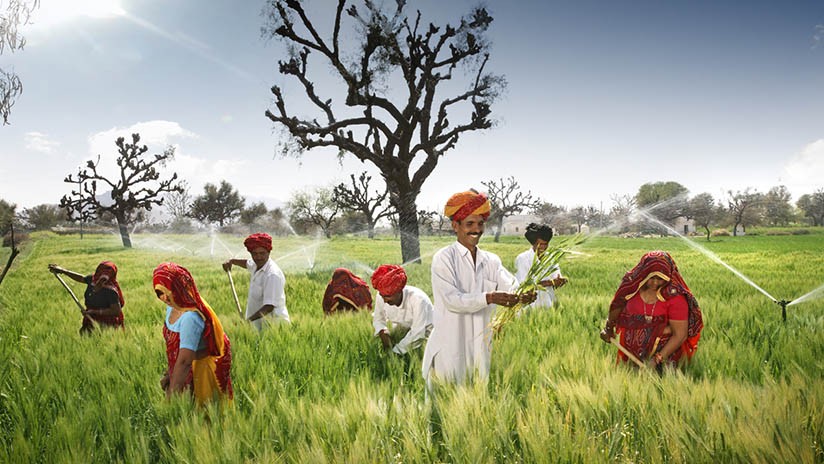Barley Production in India – Smallholder Collectives and Capacity Building

While the main focus of my work this summer here at ABI is focused on the compilation and interpretation of a water footprint analysis, I also have the honor and privilege to be involved with some supply chain development work in Rajasthan, India. This work builds upon a foundation laid by SABMiller starting in 2005. Having issues with quality control and consistency in the barley market, SAB looked to develop a relationship with local farmers to both improve access to appropriate technology and help stabilize income for farmers. The project, known as Saanjhi Unnati (partners in progress) set up three centres in Rajasthan at which farmers could sell their barley to SAB for cash, buy improved seeds at subsidized rates, and seek agricultural advice from agronomists. This extension-style service is available to members and non-members alike and has helped forge a positive relationship between the company and its’ suppliers.
As part of the United Nations Global Compact for Sustainable Supply Chains the programme is described as follows:
“While the project is targeted at improving the barley supply chain in India, the overall aim is to secure a long-term reliable source of locally grown malt-quality barley and test new strains of barley that offer a better yield and price to the farmer. Finally, the objective is to produce the seed as well as buy products, thus ensuring higher grade of crop with the superior brew house performance” –source
As SABMiller was acquired by ABI in the Autumn of 2016, this project is now a joint venture for the amalgamated corporation and now has over 8,000 small-holder farmers that utilize the services provided. As far as I can tell, my job within the context of this project will be to explore some of the social and environmental risks with expanding the reach of this project to other potential areas within India. I think this is a very cool project and an example of big business leveraging it’s own economic power for mutual benefit of individuals and ABI itself. By guaranteeing a better price for barley that meets ABI standards and allowing affordable access to improved seeds and fertilizers, as well as the knowledge of how to operate more effectively and efficiently, this directive has massive potential to affect local agri-economies on a significant scale. I would like to see some sort of financial capital access scheme built into this to allow farmers access to micro-loans for self-investment or perhaps some kind of index insurance scheme to improve resilience and encourage farmers to take risks for higher yields. I will know more about the project in the coming weeks and will share what I am able!
For more information on the project in the past check out the Economic Times Article here.
Another similar project in India by SAB was their Groundwater Management Initiative in Neemrana, Rajasthan- a region that is isolated in terms of outside water resources. As an agriculturally based economic region, the unconfined groundwater in Neemrana had all but collapsed from over-use. SAB Invested in new technology that essentially created drainage tanks in which runoff water is collected and allowed to infiltrate both in to the unconfined and deeper confined aquifers. A year of average rainfall for the region saw the water table rise 56 feet in some regions, allowing many to use wells that had previously run dry. Coupled with giving farmers access to improved agricultural techniques (such as conservation agriculture or no-till methods) this strategy greatly increases resilience to climatic shocks. I hope to see this technology implemented pro-actively in some of the water scarce regions I will be examining in India.
You can read more about the Neemrana Groundwater Management Initiative here and here.
